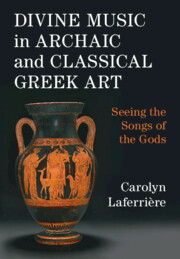Book contents
- Divine Music in Archaic and Classical Greek Art
- Divine Music in Archaic and Classical Greek Art
- Copyright page
- Dedication
- Contents
- Figures
- Acknowledgments
- Abbreviations
- Introduction
- One Sculpting Divine Music
- Two Pouring Performances
- Three Painting with Music
- Four Divine Music in Context
- Five Responding to Divine Music
- Conclusion
- Bibliography
- Index
- References
Bibliography
Published online by Cambridge University Press: 01 February 2024
- Divine Music in Archaic and Classical Greek Art
- Divine Music in Archaic and Classical Greek Art
- Copyright page
- Dedication
- Contents
- Figures
- Acknowledgments
- Abbreviations
- Introduction
- One Sculpting Divine Music
- Two Pouring Performances
- Three Painting with Music
- Four Divine Music in Context
- Five Responding to Divine Music
- Conclusion
- Bibliography
- Index
- References
Summary

- Type
- Chapter
- Information
- Divine Music in Archaic and Classical Greek ArtSeeing the Songs of the Gods, pp. 245 - 266Publisher: Cambridge University PressPrint publication year: 2024

